Filter by
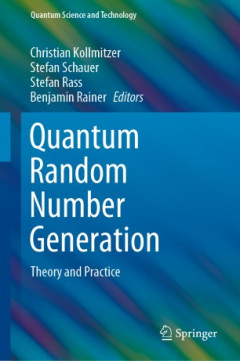
Quantum random number generation: theory and practice (quantum science and te…
This book provides an overview of state-of-the-art implementations of quantum random number generators (QRNGs), and especially examines their relation to classical statistical randomness models and numerical techniques for computing random numbers. The reader - who ideally has a background in classical statistics, computer science, or cryptography - is introduced to the world of quantum bits st…
- Edition
- -
- ISBN/ISSN
- 9783319725949
- Collation
- -
- Series Title
- -
- Call Number
- 512.7 KOL q

Security, privacy and user interaction
Table of Contents Part I Considering the Typical User Mind Your SMSes: Mitigating Social Engineering in Second Factor Authentication Permissions and Privacy Privacy and Tracking Part II Considering the Malicious User A Framework for Analysis Attackers’ Accounts Environmentally and Politically Conscious Crypto Part III Designing Solutions Based on Typical and Malicious Users So…
- Edition
- -
- ISBN/ISSN
- 9783030437534
- Collation
- xv, 153 hlm.; ilus.; 23 cm
- Series Title
- -
- Call Number
- 005.8 JAK s

Pro cryptography and cryptanalysis with C++20: creating and programming advan…
Table of contents About the Authors About the Technical Reviewer Acknowledgments Part I. Foundations 1. Getting Started in Cryptography and Cryptanalysis 2. Cryptography Fundamentals 3. Mathematical Background and Its Applicability 4. Large Integer Arithmetic 5. Floating-Point Arithmetic 6. New Features in C++20 7. Secure Coding Guidelines 8. Cryptography Libraries in C/C++20 P…
- Edition
- -
- ISBN/ISSN
- 9781484265857
- Collation
- xvii, 469 hlm.; ilus.; 25,3 cm
- Series Title
- -
- Call Number
- 005.262 MIH p
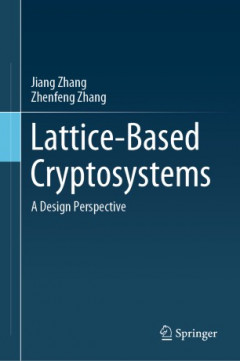
Lattice-based cryptosystems: a design perspective
This book focuses on lattice-based cryptosystems, widely considered to be one of the most promising post-quantum cryptosystems and provides fundamental insights into how to construct provably secure cryptosystems from hard lattice problems. The concept of provable security is used to inform the choice of lattice tool for designing cryptosystems, including public-key encryption, identity-based e…
- Edition
- -
- ISBN/ISSN
- 9789811584268
- Collation
- xiii, 174 hlm.; ilus.; 24 cm
- Series Title
- -
- Call Number
- 005.82 ZHA l
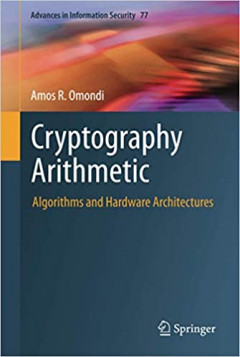
Cryptography arithmetic: algorithms and hardware architectures (advances in i…
This book is an introduction to the implementation of cryptosystems at that level. The aforementioned arithmetic is mostly the arithmetic of finite fields, and the book is essentially one on the arithmetic of prime fields and binary fields in the context of cryptography. The book has three main parts. The first part is on generic algorithms and hardware architectures for the basic arithmetic op…
- Edition
- -
- ISBN/ISSN
- 9783030341411
- Collation
- xiv, 336 hlm.: ilus.; 24 cm
- Series Title
- Advances in Information Security Book 77
- Call Number
- 005.82 OMO c

Quantum cryptography: from key distribution to conference key agreement (quan…
Table of Contents 1. Introduction 2. Elements of Quantum Information Theory 3. Introducing Quantum Key Distribution 4. Quantum Conference Key Agreement 5. Quantum Key Distribution with Imperfect Devices 6. Beyond Point-to-Point Quantum Key Distribution 7. Device-Independent Quantum Cryptography 8. Conclusion and Outlook
- Edition
- -
- ISBN/ISSN
- 9783030643591
- Collation
- xvii, 152 hlm.; ilus.; 24 cm
- Series Title
- -
- Call Number
- 005.82 GRA q
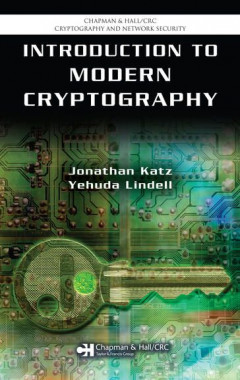
Introduction to modern cryptography
Cryptography plays a key role in ensuring the privacy and integrity of data and the security of computer networks. Introduction to Modern Cryptography provides a rigorous yet accessible treatment of modern cryptography, with a focus on formal definitions, precise assumptions, and rigorous proofs.
- Edition
- 1
- ISBN/ISSN
- 9781584885511
- Collation
- 552 hlm.; 23,5 cm
- Series Title
- -
- Call Number
- 652.8 KAT i
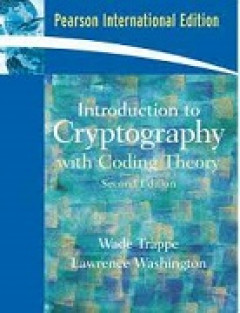
Introduction to cryptography with coding theory
CONTENTS 1. Overview of cryptography and its applications 2. Classical cryptosystems 3. Basic number theory 4. The data encryption standard 5. The advanced encryption standard : Rijndael 6. The RSA algorithm 7. Discrete logarithms 8. Hash functions 9. Digital signatures 10. Security protocols 11. Digital cash 12. Secret sharing schemes 13. Games 14. Zero-knowledge tec…
- Edition
- Second Edition (International Edition)
- ISBN/ISSN
- 0131981994
- Collation
- xiv, 576 hlm.: ilus.; 23 cm.
- Series Title
- -
- Call Number
- 005.824 TRA i
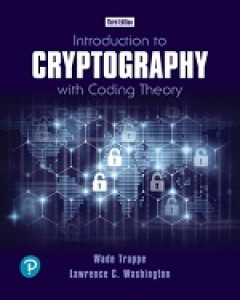
Introduction to cryptography with coding theory
Edisi ketiga ini merupakan revisi dari edisi sebelumnya. Buku Introduction to cryptography: with coding theory edisi ketiga memadukan aspek terapan dan teoretis untuk membangun fondasi yang kuat dalam kriptografi dan keamanan komputer. Penulis menginformasikan cakupan topik yang luas dari sudut pandang matematika, dan mencerminkan tren terbaru dalam bidang kriptografi yang berubah dengan cepat.…
- Edition
- Third Edition
- ISBN/ISSN
- 9780134860992
- Collation
- xiii, 621 hlm.; ilus.; 28 cm
- Series Title
- -
- Call Number
- 005.824 TRA i
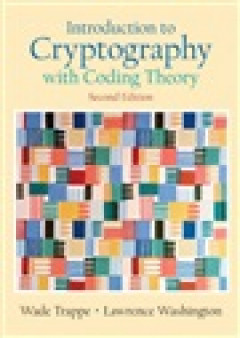
Introduction to cryptography with coding theory
This book assumes a minimal background in programming and a level of math sophistication equivalent to a course in linear algebra. It provides a flexible organization, as each chapter is modular and can be covered in any order. Using Mathematica, Maple, and MATLAB, computer examples included in an Appendix explain how to do computation and demonstrate important concepts. A full chapter on error…
- Edition
- Second Edition
- ISBN/ISSN
- 0131862391
- Collation
- xiv, 573 hlm.; 22 cm
- Series Title
- -
- Call Number
- 005.824 TRA i
 Computer Science, Information & General Works
Computer Science, Information & General Works  Philosophy & Psychology
Philosophy & Psychology  Religion
Religion  Social Sciences
Social Sciences  Language
Language  Pure Science
Pure Science  Applied Sciences
Applied Sciences  Art & Recreation
Art & Recreation  Literature
Literature  History & Geography
History & Geography